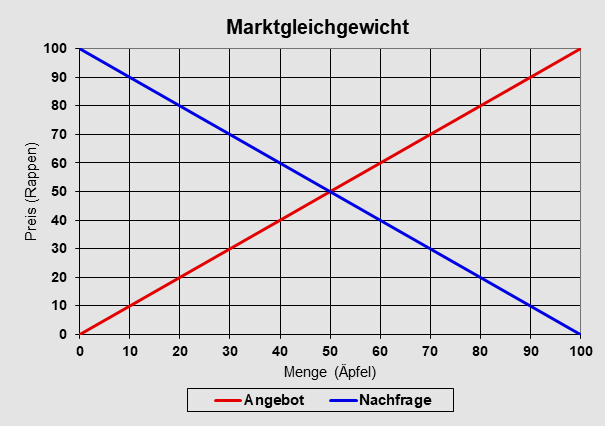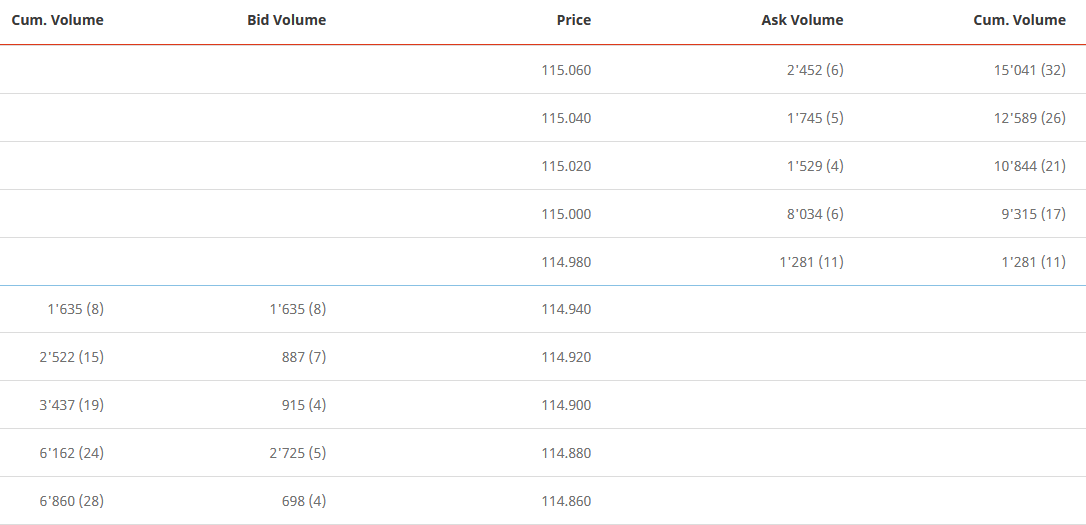What does the term “offer” mean?
The offer indicates the total quantity of a particular good or service that is available to buyers/consumers. Supply can refer to the quantity that is available at a certain price. This is closely related to the demand for a good or service at a particular price. All other things being equal, the supply of producers will increase when the price increases, as all companies strive to maximize profits. If buyers/consumers demand a good or service and are willing to pay more for it, producers will increase supply. If supply increases, the price will fall while demand remains the same. Ideally, markets reach an equilibrium point where supply equals demand. At this point, consumer benefits and producer profits are maximized.
In most cases, supply and demand are determined by various factors and can be represented as curves in diagrams. These curves are referred to as supply and demand curves. The vertical axis shows the price and the horizontal axis the quantity sold at the various prices. A demand curve therefore runs downwards, from left to right. Buyers/consumers will not buy the product or service at a very high price. The cheaper a product or service becomes, the more customers/consumers will buy the product or service. The supply curve is rising. When prices rise, sellers offer more of a product or service. The point where the supply and demand curves intersect is called the market equilibrium.
Example calculation of the equilibrium price
The offer
Assume that 100 apples are offered on the market at a price of one franc per apple. The supply of apples decreases by 10 apples each time the price of apples falls by 10 centimes, as some farmers are no longer prepared to offer their apples at this price. This can be represented by a function:
Quantity offered = 100 x price (in CHF)
The demand
Let’s assume that customers at the weekly market are not prepared to pay one franc for an apple. If the price is one franc, no apple would be sold. However, if the price falls, there are more and more customers who are willing to buy an apple. The sales volume of apples therefore increases as the price falls. Assuming there are 10 people who are willing to buy an apple for 90 centimes, 10 apples are sold on the market at a price of 90 centimes. Demand can also be represented by a function:
Demand quantity = 100 – (100 x price (in CHF))
Using these two functions, the equilibrium price can be calculated by equating the two functions. In this example, the equilibrium price is 50 centimes. This can also be seen in the figure.

Supply and demand as the basis for the share price
The prices of shares (share prices) are also calculated on the basis of buy and sell orders. Pricing is therefore based on the classic supply and demand mechanism.
The share prices are determined in the order book. In the order book, the quantity of sell offers (ask volume) for each share is compared with the quantity of buy offers (bid volume) at a specific price. The asking prices are called limits and are entered by investors as limit orders, for example. For shares to be traded, there must be a sell and buy offer with the same asking price. Only then will the shares actually be traded. This is the case if, for example, there is a limit order with the same bid (buy) and ask (sell) price. Or a seller or buyer enters a “market order”, i.e. he is prepared to sell at the currently offered “bid” price or to buy at the offered “ask” price. The price that ultimately results from supply and demand is also the price that is shown in the price chart of a share. This represents the market equilibrium. The table shows the order book of the Nestlé share on September 10, 2021 (9:09 a.m., snapshot). The price is adjusted continuously. Above the equilibrium price (represented by the blue line in the chart), the offers to sell are shown by quantity and price. Below the equilibrium price, the purchase offers are shown by quantity and price.

Order book of the Nestlé share on 10.09.2021 9:09 a.m., www.six-group.com
For example, if a buyer enters a market order for 2,000 Nestlé shares, he receives the first 1,281 shares for CHF 114.98 (ask price & ask volume at this price). He receives the remaining 719 Nestlé shares for CHF 115. The seller at the price of CHF 114.98 thus sells all his offered 1’281 Nestlé shares. The seller at the price of CHF 115 sells only 719 Nestlé shares of the total of 8,034 Nestlé shares offered in this trade.
If a seller enters a market order for 2,000 Nestlé shares in this order book, he sells the first 1,635 shares for CHF 114.94 (bid price & bid volume at this price). He sells the remaining 365 shares for CHF 114.92. On the buy side, the buyer who bid CHF 114.94 receives all of his desired 1,635 Nestlé shares. The buyer who bid only CHF 114.92 receives only 365 shares of the originally desired 887 shares in this trade.
This process is constantly repeated with each new order and the order book changes every minute, second or even fraction of a second for liquid securities.
Supply elasticity
Supply elasticity measures the reaction of the supply of a good or service to a change in its market price. When the price rises, the supply generally increases.
The profits of a good or service are not constant. They are influenced by many factors, such as competition. Companies therefore focus on profitable goods. This leads to an increase in the supply of high-priced goods and a decrease in the supply of low-priced goods.
Other factors that influence supply elasticity are, for example, the capacity of the industry and the ability to increase or decrease the production of a product. The amount of stock, inventory or raw materials available to the industry also plays a role in supply elasticity. In addition, the time required to produce a good, as well as the available labor and capital, influence the supply quantity. In the short term, supply is often not elastic, as producers are working at the limits of their capacity. Only in the long term can companies adapt to increased demand. To enable companies to adapt to demand more quickly, they work, for example, on improving the technology used and capacity (increasing stock levels). In addition, improving the way products are shipped and distributed can help.
There are also markets that are considered relatively inelastic. These markets are often less liquid. This includes the real estate market, for example, as resources such as land are limited. In addition, houses, for example, have a long production period. This means that price changes can only be responded to with a long time lag.
Shares with high supply elasticity are more volatile. Stocks with low supply elasticity are less volatile. If there are only a few shares available (low supply elasticity), this could mean that the shares are very valuable due to the small supply. In a liquid market, bid prices usually rise until there are sellers willing to offer their shares for sale at these prices.


